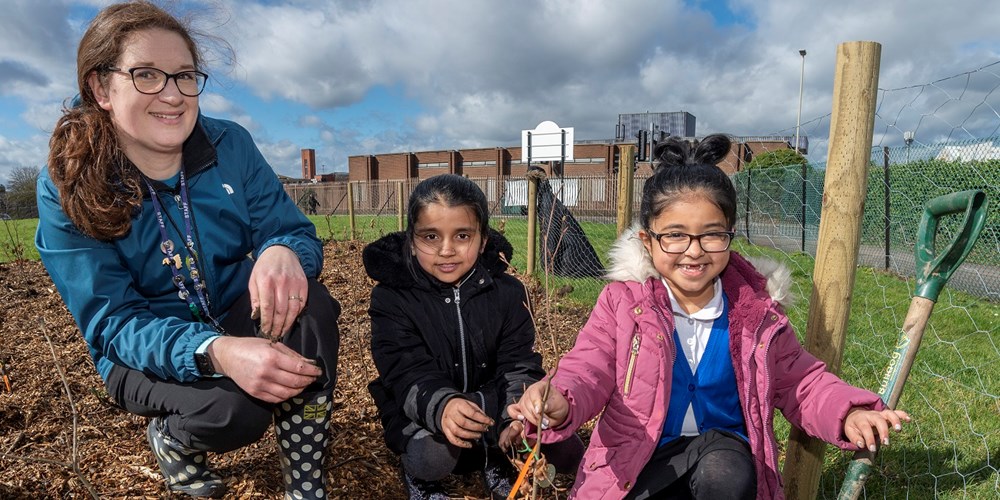A HUGE network of Tiny Forests is taking root at schools across Leicester thanks to a partnership between the city council and a leading environmental charity.
Over the last two years, Leicester City Council has been working with environmental charity Earthwatch Europe to bring their Tiny Forest programme to life at 20 local schools.
At each of the schools, pupils, staff and other volunteers have helped to plant hundreds of new trees in small plots no bigger than a tennis court. Each Tiny Forest has 600 trees – including Wych Elm, Oak, Silver Birch, Hawthorn, and Broom – and is designed to attract over 500 animal and plant species within the first three years.
They also provide an accessible green space and outdoor classroom to help allow local communities and schoolchildren connect with nature.
Leicester was one of the first cities in the UK to take part in the programme, when its first Tiny Forest was planted at Queensmead Primary Academy, in Braunstone, two years ago.
Merrydale Junior School, in North Evington, will be the latest school to plant a new Tiny Forest in its school grounds, with dozens of students across all year groups lending a hand.
This brings the city’s total number of new Tiny Forests to 20 – the most of any city in the UK.
Antony Corbett, deputy headteacher at Merrydale Junior School, said: “We are proud to be part of the Tiny Forest project. It has helped and will continue to help us teach the children about the importance of green spaces and bio-diversity. This will leave a lasting legacy for generations of children to come”
Earthwatch Europe’s project manager, Emily Pennifold, said: “It’s fantastic to see so many new Tiny Forests being planted in Leicester, leaving a lasting green legacy in the city. The school children who are planting these mini woodlands will be able to return during the warmer months for our Science Days, and their teachers will learn how to use their Tiny Forest as an outdoor classroom. Connecting so many children and young people with nature will not only have educational benefits; we hope that it will also boost their wellbeing and inspire them to take positive action for the environment.”
Deputy city mayor Cllr Adam Clarke, who leads on transport, clean air and climate emergency, said: “The city’s Tiny Forests are a huge boost to the city’s green infrastructure and have tremendous educational and environmental benefits.
“I am really proud that we now have 20 schools that are home to a Tiny Forest – the most of any city in England. It also represents the planting of thousands of new trees in the heart of local communities.
“As well as creating an important habitat for wildlife, Tiny Forests provide a tremendous resource, building on the environmental education provided as part of our citywide Eco-Schools programme. It is a very tangible way of helping young people connect with vital issues around biodiversity, sustainability and the climate emergency.”
Tiny Forests are based on an established forest management method developed in the 1970s by Japanese botanist Dr Akira Miyawaki. To create new Tiny Forests, Earthwatch identifies suitable sites in locations where nature is most needed, working with partners, local councils, community groups and schools to plan, design, prepare, plant, maintain and monitor their local forest.
By 2030, Earthwatch aims to have planted 500 Tiny Forests across Europe.
Leicester’s latest ten Tiny Forests have been planted with support from the Local Authorities Treescape Fund.
